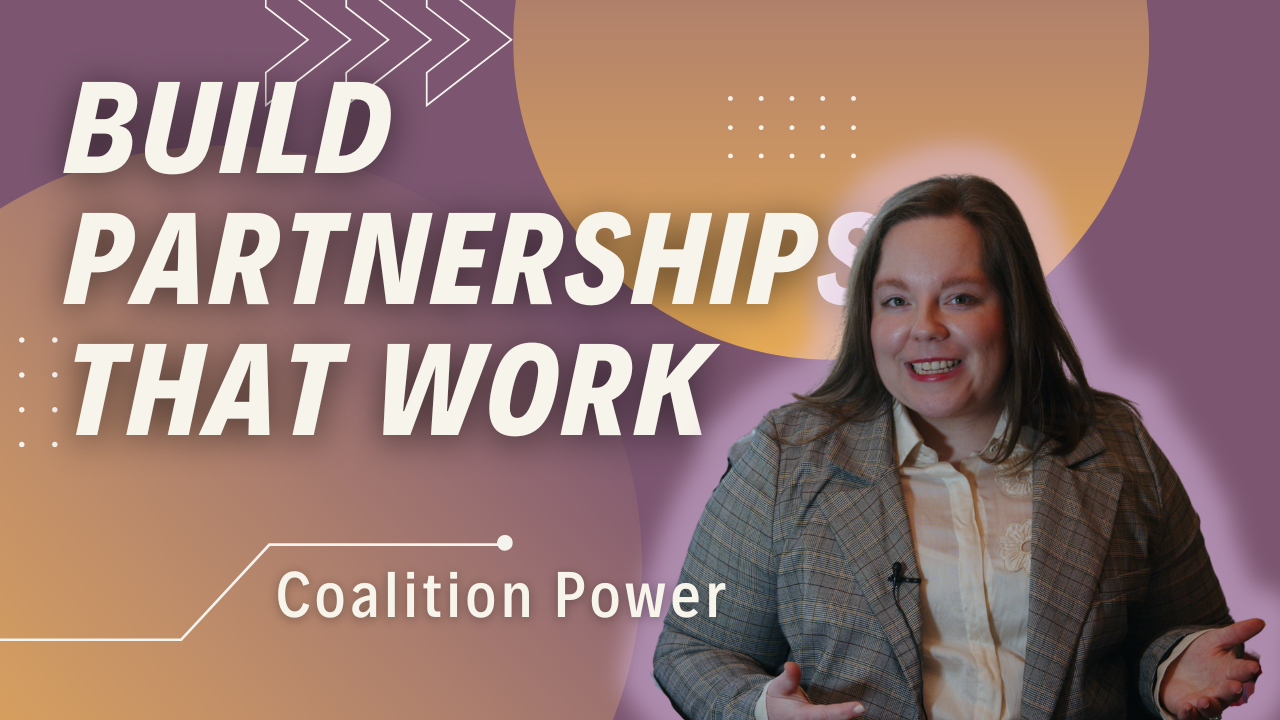
Ever been in a coalition meeting where it feels like everyone's speaking different languages? Where health departments, community organizations, and clinical partners all have different priorities, timelines, and definitions of success? In this episode of Public Health Curated, we're unlocking the secrets to building coalitions that actually work - because when we grow our power together, that's when real change happens.
Key Takeaways
- Relationships must come before tasks in successful coalitions
- Clear agreements about structure and decision-making processes are essential
- Celebrating small wins strategically helps maintain momentum
- Addressing power imbalances proactively creates stronger partnerships
Episode Highlights
The Hidden Dynamics of Coalitions
When I joined a community health initiative that had been building momentum for nearly a decade, I walked into my first meeting excited and eager to contribute. But within minutes, I could feel the undercurrents of tension. Long-time members were subtly staking their claims: "Well, we've always approached it this way" or "Back when we started this work..."
I noticed how certain people would barely acknowledge others' ideas, while some partners were clearly aligned in invisible alliances. These dedicated people had been pushing this boulder uphill for years with little recognition, and now that their work was finally getting attention and resources, there was an instinct to protect their territory, their approach, their relationships.
The Coalition Success Framework
1. Relationships Before Tasks
This isn't just nice-to-have - it's essential. In our community health initiative coalition, once people shared their personal stories - why they cared about community health - the entire dynamic shifted. One leader talked about growing up in an underserved community. The community organization director shared how CHWs had helped her own family navigate healthcare. Suddenly, we weren't just organizations with competing interests - we were people with a shared purpose.
Try this: Start every coalition with connection before content. Even if you only have 10 minutes, ask people to share their "why" - not their job title or organization, but their personal connection to the work. It changes everything.
2. Structure for Success
Good intentions aren't enough - you need clear agreements about how you'll work together. After establishing relationships in our CHW coalition, we created what I call the Coalition Clarity Framework - defining our shared purpose, our working principles, and our decision-making processes.
For our shared purpose, we went beyond vague statements like "support CHWs" to something specific: "Create a sustainable career pathway for CHWs that improves both community health outcomes and economic opportunity." For principles, we agreed that CHW voices would be centered in every decision. And for process, we adopted a modified consensus model - we wouldn't move forward unless 75% of partners were in agreement.
3. Maintaining Momentum
Coalitions often start strong and then fizzle out when the real work begins. The key is celebrating small wins strategically while addressing power imbalances proactively.
In one coalition, we created a simple ritual: starting each meeting by highlighting one concrete impact we'd made together since the last meeting. Sometimes it was small - "We got culturally appropriate materials translated into three languages" - but acknowledging these victories kept energy high even when challenges seemed overwhelming.
And about those power imbalances - they don't disappear just because you're in a coalition. In fact, they can become even more pronounced. That's why we built in specific practices to ensure all voices were heard. In the health equity coalition I worked with, we rotated leadership roles, creating space for community organizations to chair meetings typically dominated by large institutions. We also adopted the "step up, step back" principle - if you typically speak often, challenge yourself to listen more; if you typically stay quiet, challenge yourself to share your perspective.
Your Coalition Quick-Start Guide
1. Coalition Mapping Exercise
Take 15 minutes at your next meeting to map out all your stakeholders and their key interests. Draw a simple diagram with your coalition purpose in the center and each partner around it. For each partner, note what they bring and what they need. This visual makes hidden dynamics visible and helps identify potential tensions before they become conflicts.
2. First 100 Days Timeline
Most coalitions fail because they try to do everything at once. Instead, focus on three phases:
- First 30 days: relationship building and shared purpose
- Days 31-60: structure and agreements
- Days 61-100: quick wins and momentum building
3. Coalition Agreement
It doesn't need to be complex - just one page covering purpose, principles, decision-making approaches, and communication expectations. Having this written down prevents so many headaches later!
Your Action Steps
- Complete the Coalition Mapping Exercise for a partnership you're currently involved in
- Create a simple one-page Coalition Agreement template that you can adapt for different contexts
- Implement one relationship-building practice at your next meeting (e.g., personal story sharing)
- Establish a "wins celebration" ritual to acknowledge progress, no matter how small
- Share your coalition-building experiences using #CoalitionBuilding
Join the Conversation
What's your experience with public health coalitions? Have you found effective ways to navigate the complex dynamics of partnership? Share your insights in the comments below, and let's create a community of practice around effective collaboration using #CoalitionBuilding.
About the Host: Veronica Sek-Shubert, MPH, is the founder of Public Health Curated and a DrPH candidate at Tulane University. With over 15 years of experience in non-for-profit and public health spaces, she's dedicated to helping professionals rediscover their spark while creating meaningful system change.
